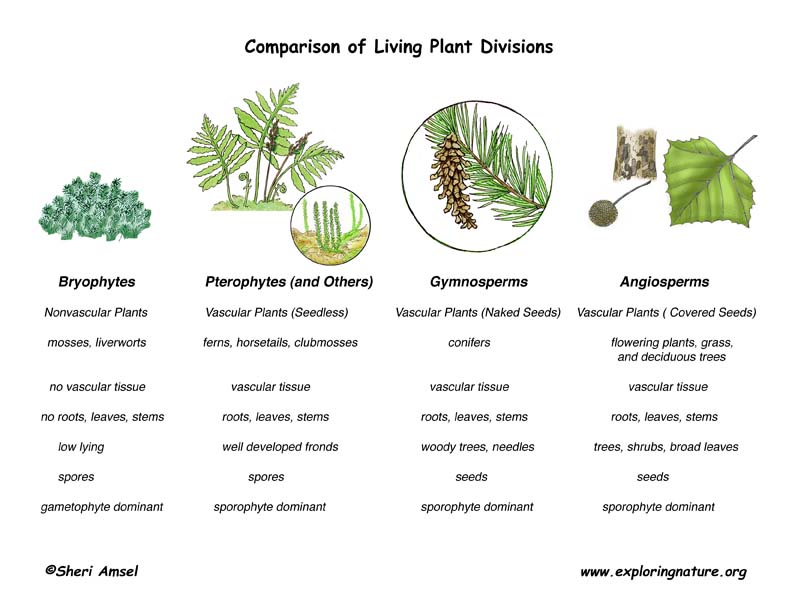

Plants are a silent but vital part of life on Earth. They are so important because they make their own energy from sunshine. This ability is a process called photosynthesis. Because they make their own food, they are at the bottom of the food web supplying food and energy for all other life on the earth.
Plants store extra sugars in their stems, roots, seeds or fruit. That energy is passed on to any animal that eats them, including us. We are part of the food web when we eat plant parts like apples, carrots, rice or potatoes. Photosynthesis is the first step in the complex food web that connects all living things. Every creature on earth depends to some degree on green plants and their byproducts.
The oxygen that is released in the process of photosynthesis is also essential for life on Earth. Forests and green phytoplankton coating the oceans take in carbon dioxide and give off oxygen in the process of photosynthesis. This allows all the other organisms on earth to inhale oxygen and exhale carbon dioxide in the process of breathing with a plentiful supply.
Plants also root in and cover over the soil helping to keep it in place and preventing erosion.
Provide Energy, Shelter, Clothing, Medicines
Trees, the longest living plant on Earth, are used to produce timber for building homes and other human infrastructure. They are also burned for heat and fuel. Cotton, linen and other plant matter is used in producing clothing that we wear every day. Plant extracts are also part of many important medicines.
Just the Facts:
1) Green plants produce their own energy through photosynthesis.
2) Green plants are the bottom of the food chain and provide much of the food it takes to support life on earth.
3) Along with a few other organisms (blue green algae on the surface of the ocean, etc.), green plants produce much of the breathable oxygen on the planet by pulling carbon dioxide out of the air and releasing oxygen.
4) Plants provide ground cover to prevent soil erosion.
Introductory Plant Activity:
Look around your house and see how many things have wood or other plant matter in them (don't forget your closet, food shelves and fridge).
See how long it takes to reach 100 items.
Plants are everywhere!
Plant Classification
Plants are broken down into two main groups – vascular plants or nonvascular plants. Vascular plants make up about 80% of all plants. They have special tissues in their stems to move water and nutrients up and down the plant (xylem and phloem). This allows the plant to grow to a much larger size. They are also characterized by their reproductive phase (sporophyte generation is dominant).
Vascular plants are broken down into three groups:
1) Seedless vascular plants (ferns, horsetails and clubmosses)
In this group the sporophyte(diploid) dominates and is separate from the gametophyte.
The gametophyte makes sperm that travel in water to reach the egg.
A new plant results.
2) Naked seed vascular plants (conifers, cycads, ginkos)
These are also called gymnosperms. Gymnosperm seeds are not completely covered by the parent plant when they are formed. They are inside dangling cones. Here are some of their traits:
a. In conifers (pine, spruce, fir, redwoods and cedars) the tree is the sporophyte generation (diploid).
b. The gametophyte generation is too small to see.
c. Males and female cones have haploid spores. Male cones release pollen in the spring, which is spread by the wind. Some reach female cones, which release a sticky fluid that traps the blowing pollen. The pollen, over time, will burrow into the female cone’s ovule to reach and fertilize the egg. Eventually, the cone will fall and in the right conditions grow into a conifer tree.
3) Protected seed vascular plants (flowering plants, grasses and deciduous trees) are also called angiosperms. Here are some of their traits:
a. Their seeds are protected inside a fruit.
b. The flower grows to attract pollinators and house the ovule with eggs inside.
c. It also holds the sperm that will be released as pollen.
More about Vascular Plants.
Nonvascular plants include the mosses, liverworts and hornworts.
These are also called bryophytes. Here are some of their traits:
a. They are small, short plants found in wet places.
b. Their gametophyte generation dominates.
c. The sporophyte generation grows from it and depends on it for food.
More about Nonvascular Plants.
When you research information you must cite the reference. Citing for websites is different from citing from books, magazines and periodicals. The style of citing shown here is from the MLA Style Citations (Modern Language Association).
When citing a WEBSITE the general format is as follows.
Author Last Name, First Name(s). "Title: Subtitle of Part of Web Page, if appropriate." Title: Subtitle: Section of Page if appropriate. Sponsoring/Publishing Agency, If Given. Additional significant descriptive information. Date of Electronic Publication or other Date, such as Last Updated. Day Month Year of access < URL >.
Amsel, Sheri. "About Plants (Introduction) " Exploring Nature Educational Resource ©2005-2025. March 15, 2025
< http://exploringnature.org/db/view/About-Plants-Introduction- >

